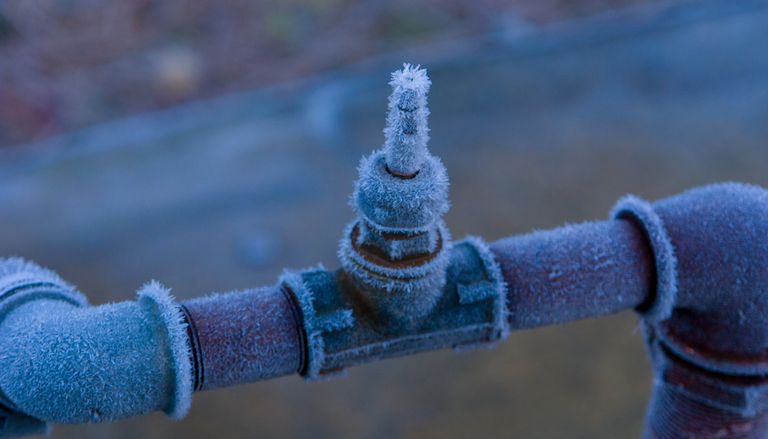Important Tips to Avoid Frozen Pipes in Winter: Professional Guidance
Important Tips to Avoid Frozen Pipes in Winter: Professional Guidance
Blog Article
How do you actually feel in relation to Prevent Frozen Pipes ?

Cold weather can ruin your plumbing, specifically by freezing pipes. Right here's how to stop it from happening and what to do if it does.
Intro
As temperature levels drop, the danger of icy pipes rises, potentially causing costly repair services and water damage. Recognizing exactly how to stop frozen pipelines is essential for home owners in chilly climates.
Comprehending Frozen Pipelines
What triggers pipes to ice up?
Pipes freeze when subjected to temperatures below 32 ° F (0 ° C) for extended durations. As water inside the pipelines freezes, it expands, putting pressure on the pipe walls and potentially creating them to break.
Threats and damages
Icy pipelines can lead to water supply disruptions, home damages, and expensive repair services. Burst pipes can flooding homes and create substantial architectural damages.
Indications of Frozen Pipeline
Recognizing icy pipelines early can stop them from rupturing.
How to determine icy pipelines
Look for decreased water flow from taps, unusual smells or sounds from pipelines, and noticeable frost on subjected pipelines.
Prevention Tips
Protecting prone pipelines
Wrap pipes in insulation sleeves or utilize warm tape to secure them from freezing temperature levels. Concentrate on pipelines in unheated or outside areas of the home.
Heating techniques
Keep interior spaces appropriately warmed, especially areas with plumbing. Open up cupboard doors to permit cozy air to circulate around pipes under sinks.
Securing Exterior Pipes
Garden tubes and exterior taps
Detach and drain pipes garden hoses prior to winter months. Set up frost-proof spigots or cover exterior taps with shielded caps.
What to Do If Your Pipes Freeze
Immediate actions to take
If you suspect icy pipes, keep faucets open to relieve pressure as the ice thaws. Use a hairdryer or towels soaked in warm water to thaw pipelines slowly.
Long-Term Solutions
Architectural adjustments
Think about rerouting pipes away from exterior walls or unheated areas. Include extra insulation to attics, basements, and crawl spaces.
Updating insulation
Purchase high-grade insulation for pipes, attic rooms, and wall surfaces. Correct insulation helps preserve regular temperature levels and decreases the risk of icy pipes.
Verdict
Avoiding icy pipes calls for proactive procedures and fast feedbacks. By recognizing the causes, indicators, and safety nets, house owners can safeguard their plumbing during cold weather.
6 Proven Ways to Prevent Frozen Pipes and Protect Your Home
Disconnect and Drain Garden Hoses
Before winter arrives, start by disconnecting your garden hoses and draining any remaining water. Close the shut-off valves that supply outdoor hose bibs and leave the outdoor faucet open to allow any residual water to drain. For extra protection, consider using faucet covers throughout the colder months. It’s also important to drain water from any sprinkler supply lines following the manufacturer’s directions.
Insulate Exposed Pipes
Insulating your pipes is an effective way to prevent freezing. Pipe insulation is readily available at home improvement stores and is relatively inexpensive. Pay close attention to pipes in unheated areas such as the attic, basement, crawl spaces, or garage. Apply foam insulation generously to create a buffer against the cold. You can also wrap your pipes in heat tape or thermostat-controlled heat cables for added warmth.
Seal Air Leaks
Inspect your home for any cracks or openings that could let in cold air. Seal any holes around the piping in interior or exterior walls, as well as the sill plates where your home rests on its foundation. Additionally, make sure to keep your garage door closed unless you’re entering or exiting. Leaving it open creates a significant air leak that can lead to frozen pipes.
Allow Warm Air Circulation
During cold snaps, it’s essential to allow warm air to circulate evenly throughout your home. Leave interior doors ajar to promote better airflow. Open kitchen and bathroom cabinets to help distribute heat consistently around the rooms. If you have small children or pets, be sure to remove any household chemicals or potentially harmful cleaners from open cabinets for safety.
Let Faucets Drip
A small trickle of water can make a big difference in preventing ice formation inside your pipes. When temperatures drop significantly, start a drip of water from all faucets served by exposed pipes. This continuous flow helps prevent the water from freezing. Additionally, running a few faucets slightly can relieve pressure inside the pipes, reducing the chances of a rupture if the water inside does freeze.
https://choateshvac.com/6-proven-ways-to-prevent-frozen-pipes-and-protect-your-home/

We hope you liked our topic about 6 Ways to Prevent Frozen Pipes. Thanks a lot for taking time to browse our post. In case you appreciated our blog posting please remember to share it. Thank you for taking the time to read it.
This Site Report this page